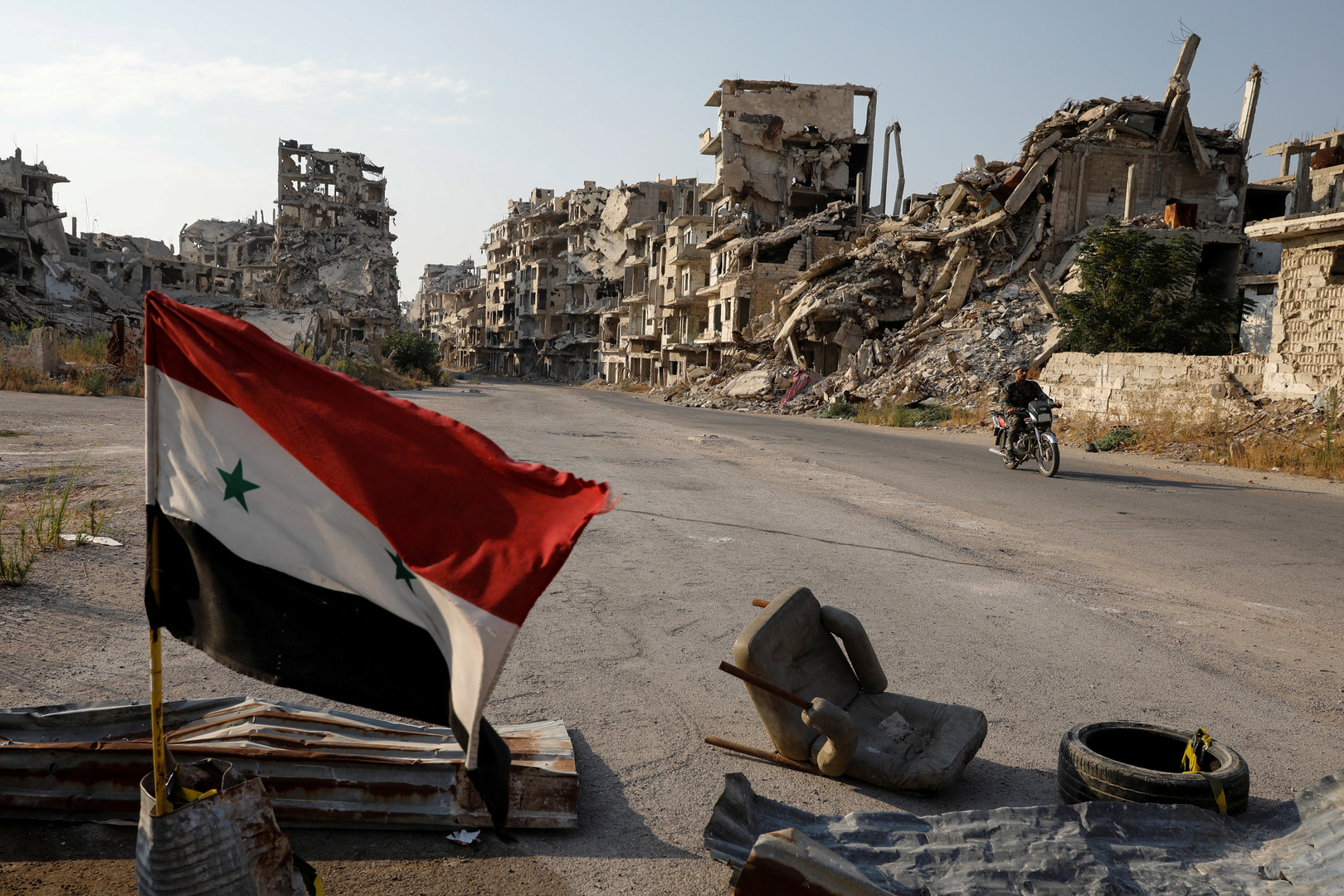Dr. Gilles Kepel is a French political scientist and Arabist, specialized in contemporary issues of the Middle East and Muslims in the West. He is a professor and director of the Middle East and Mediterranean chair at Université Paris Sciences et Lettres. He is an author of 20 books. His latest book, “Beyond Chaos: The Crisis in the Mediterranean and the Middle East,” is an analysis of the present situation in the Middle East and the Mediterranean in a historical perspective from the October war of 1973 to the present. Dr. Kepel maps the development of the Islamization of politics, and the impact of this development on Saudi Arabia and then later Iran, through three stages of Jihadism.
This analysis is taken from an interview with Dr. Kepel.
Dr. Gilles Kepel is a French political scientist and Arabist, specialized in contemporary issues of the Middle East and Muslims in the West. He is a professor and director of the Middle East and Mediterranean chair at Université Paris Sciences et Lettres. He is an author of 20 books. His latest book, “Beyond Chaos: The Crisis in the Mediterranean and the Middle East,” is an analysis of the present situation in the Middle East and the Mediterranean in a historical perspective from the October war of 1973 to the present. Dr. Kepel maps the development of the Islamization of politics, and the impact of this development on Saudi Arabia and then later Iran, through three stages of Jihadism.
This analysis is taken from an interview with Dr. Kepel.
Stages of Jihadism
The first stage of Jihadism, present from 1979 to 1997, was centered around both a jihad against the Soviets in Afghanistan and the possibility for Sunni groups to contain Iranian influence at the time. It was effective against Russia in Afghanistan, but this phase was not very successful elsewhere and failed in Algeria, Chechnya, and Egypt. Phase one was characterized by a “nearby” enemy, which jihadist groups in their earliest form of organization fought against hoping to establish regional change. In Dr. Kepel’s book “Jihad: The Political Trail of Islam,” he analyzes the fall of this early organization and the concept of the “nearby” enemy, and how a new organization would rise out of the ashes.
The attack on the U.S. embassies in the Horn of Africa in 1998 marks the beginning of the second phase, jihad against the far away enemy. Bin Laden and Al Qaeda were instrumental in the development of this phase, which apexed at the 9/11 attacks in 2001. From this they gained their momentum, focusing on what Dr. Kepel referred to as a Hegelian process. The target was the faraway enemy, the United States because they concluded that the Muslim masses within their region could not revolt effectively because of fear of the West. If they showed that the US was a giant with clay feet, they would be able to institute local change without fear of international backlash. 9/11 was a very important phenomenon because it allowed the jihadists to build a very powerful narrative, a narrative that was positive in a way, and only negative narratives could be written in retaliation. Al Qaeda achieved something that their phase-one counterparts could not: they won the media war. Evident in the slogan, “No Al Qaeda without Al Jazeera,” the world-wide media gave Al Qaeda their influence, power, and momentum. This was a lesson learned, as they lost the media war in 1989 to Khomeini, who issued the fatwa against Salman Rushdie on February 14th, which stole all the coverage carrying into the next day, when the Soviets pulled out of Kabul. However, Al Qaeda and the organizations of Phase Two had flaws that ultimately lead to their demise. They were unable to deliver on the ground. They were forced to flee from Afghanistan, and they were unable to create a strong Sunni jihad base in Iraq after the US invasion due to Iranian/Shia and US retaliation. Al Qaeda fails, but the movement lives on.
The third phase of Jihadism is conducted under the initiative of two ideologues and tacticians who share the same given name, Abu Musab al-Suri and Abu Musab al-Zarqawi. Abu Musab al-Suri was a Syrian Muslim brother engineer, partially trained in France, who had worked in London as the spokesperson for the Algerian GIA before joining Bin Laden as his PR person. He became dissatisfied with what he called the hubris of 9/11 and developed a new vision. He considered that the failure of phase two of jihadism was due to that it was perceived as pyramidal and neo-Leninist and that it should be replaced with a reticular network, which would establish a presence within the middle enemy, from the Levant to Western Europe. The new strategy would make use of Muslim groups in Europe as a basis for recruitment of jihadists, as they had already been deeply califized by Saudi Arabia. After Arab upheavals destroyed the security order and cause a situation of chaos in Europe, there would be more opportunity to expand by recruiting brothers, training them in the Middle East or Pakistan, and sending them back to Europe to establish caliphates. The third phase of Jihadism, namely ISIS, held a post-millenarian perspective, as opposed to Al Qaeda which was pre-millenarian. By the same token, Abu Musab al-Zarqawi independently developed a form of jihad that was mostly sectarian. He was far more focused on killing Shias than westerners, targeting the heretics before the real infidels. He failed temporarily in Iraq after an overwhelming Shia reaction but was able to win supporters from among Iraqi Sunnis (including former Baathists) who were antagonized and persecuted. With this support, they established a network in Syria and Iraq which eventually became the Caliphate.
The third phase of Jihadism did not take place on the stage of satellite television, unlike their predecessors. They reigned in the age of social networks. On February 15th, 2005, YouTube got its license and gave terrorism a new outlet. They did not need to bomb the World Trade Center, it was enough to catch you as a hostage, dress you in an orange jumpsuit, behead you in front of a video camera, and post it on the website.” They became the terrorist, the executioner, the movie maker, and the distributer simultaneously. Moreover, they could target people far more precisely through phishing actions. This allowed them to build a mechanism that would lead to the Islamic State and to the Caliphate which was proclaimed in June 2014. However the post-millenarian organization, after a series of atrocities that did not resemble followers idea of “Allah on Earth,” began to lose support rapidly. Saudi Arabia, which originally saw it as an obstacle to Iranian success lost faith. It became detrimental to early supporters because it led to an increase in foreign boots on the ground: the 2015 JCPOA agreement allowed Russia to increase presence in Syria and send forces to Khmeimim, and Western presence increased in the campaign to terminate ISIS.
How to prevent the next phase
Today, ISIS is gone. They have lost all of their territorial strongholds, and the ability to call themselves an “Islamic State.” According to Dr. Kepel, this is the end of Phase Three, the “aufhebung” phase. They have lost their territory, but that does not mean they have lost the hearts and minds of many of their followers. Based on the many jihadists in jail who have been interviewed and interrogated, they are short of a new operation mode, but although they do not know how they are still adamant that they have to do something.
Dr. Kepel believes there is an opportunity for us to work on the reconstruction of the region in order to deter and to uproot their possible refraction, but it will not be a simple process. ISIS in its ISIS form is extinct, but the root causes are still around, as long as the political situation in the region remains unchanged. Russia has the military upper hand in the rebuilding of Syria for the time being, but this is not sustainable in the long term. It is very costly. Russia is interested in a political compromise, knowing Assad’s old politics will not be conducive to restabilization. Iran, however, has a different view. They want to secure Syria as a front against Israel to deter possible Israeli aggression. Iraq is also increasing it is a regional power, improving its political system and increasing oil production, although it still has considerable internal problems.
Moreover, Russia, as the dominant power in Syria, is friendly with Israel, Saudi Arabia, Iran, Turkey, the Kurds, and the incumbent Syrian regime all at the same time. The situation is like a “polygamist marriage:” confusing, complicated and conducive to conflict and misunderstanding. Israel and Saudi Arabia agree that Russian control in Syria and keeping Assad in power are the best option, but that Iran should not be involved — at all — which is a request Russia cannot accommodate. Russia learned in Afghanistan to limit the number of foot soldiers they deploy. Therefore, the majority of the boots on the ground in Syria, working alongside Russian Military Police and Air Force, are Iranian (or Shia Iraqi, Shia Pakistani, Hezbollah, etc.)
Moreover, of course, the Syrian army is in a severe state of incapacity and corruption. Because of Russia’s critical position, they have an opportunity and a responsibility to find a compromise with Western Europe on the future of the Levant. However, trust is still minimal. Both sides, Western Europe and Russia, recognize the need for real solutions to fix the situation in the Levant, but it is unclear now in what form that will come. He believes that mutual understanding and constructive communication are key to developing compromise, and both should consider the detrimental implications if the status quo is not changed.






